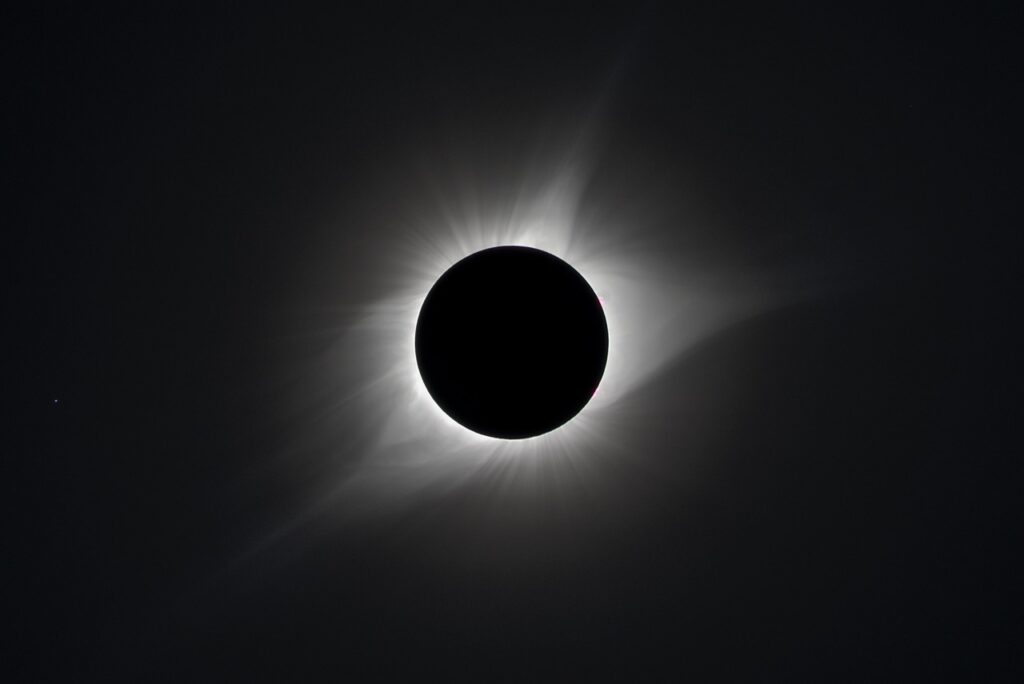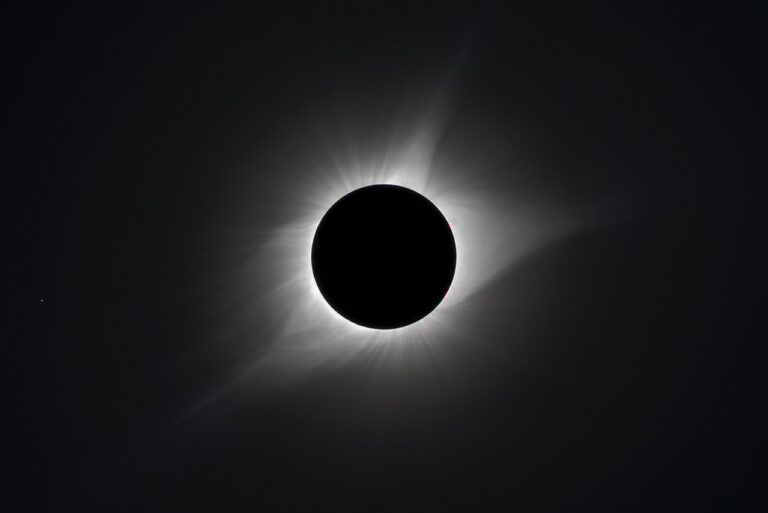The Unveiling of the Solar Eclipse 2024: An Array of Astounding Phenomena
On the 8th of April, the celestial sphere will put on a spectacular show, casting shadows of amazement and wonder on the faces of those fortunate enough to witness it. A total solar eclipse will occur, a rare astronomical event that has captivated humankind throughout history. This natural marvel will reveal a myriad of peculiar sights, unusual sounds, and unexpected feelings, creating an atmosphere of awe and mystique.

A Cosmic Ballet: Understanding Solar Eclipses
Solar eclipses are extraordinary cosmic events that occur when the Moon aligns perfectly between the Earth and the Sun, casting a shadow on our planet. As the Moon obscures the Sun, day turns into night, and the world plunges into temporary darkness.
Total Solar Eclipse: A Rare Occurrence
A total solar eclipse, such as the one on April 8, is a rarer event compared to partial or annular eclipses. This occurs when the Moon entirely covers the Sun, causing a sudden drop in daylight. Observers within the path of totality will experience this extraordinary phenomenon, while those outside this path will witness a partial eclipse.
The Historical Fear and Awe
Our ancestors often perceived total solar eclipses with trepidation and awe. They were considered ominous signs from the deities or manifestations of celestial creatures consuming the Sun. While we have moved beyond such beliefs, the total solar eclipse continues to unearth unusual and fascinating phenomena that may leave spectators spellbound.
The Wonder of Astronomical Phenomena
The total solar eclipse brings forth various astronomical wonders that are usually hidden from our view.
Bailey’s Beads: The Lunar Necklace
As the Moon makes its final approach towards the Sun, sunlight begins to seep through the valleys and craters on the lunar surface, creating a string of light at the edge of the Moon’s disc, known as “Bailey’s beads.” This phenomenon was named after the English astronomer Francis Bailey, who detailed the occurrence in 1836, although it was Edmond Halley who first recorded it during a solar eclipse in 1715.
The Diamond Ring: A Celestial Jewel
The Bailey’s beads are often accompanied by an equally striking spectacle known as the “diamond ring.” This occurs just before the point of totality when the last sunlight streams through the rugged lunar terrain, creating a glowing halo that resembles a diamond ring. Observers during the 2024 eclipse may have the rare chance to witness a “double diamond ring,” where two points of sunlight appear at the edge of the Moon.
Revealing the Sun’s Atmosphere
During a total solar eclipse, the harsh brightness of the Sun’s photosphere is blocked, allowing the Sun’s atmosphere to come into view. The outer layer, or corona, appears as a crown of white streamers surrounding the obscured Sun, while the inner layer, or chromosphere, displays a thin halo of pink and red hues closer to the lunar disc.
Unveiling Hidden Stars and Planets
The eclipse may also reveal celestial bodies typically hidden by daylight. Venus may become visible around 15 degrees to the west of the Sun, while Jupiter may appear 30 degrees to the east. Saturn and Mars might also come into view, 35 and 36 degrees to the west of the Sun, respectively. Observers may also spot Sirius, the brightest star in our night sky, towards the east-southeast.
The Devil’s Appearance: Comet 12P/Pons-Brooks
The total solar eclipse might also present an opportunity to catch a glimpse of the comet 12P/Pons-Brooks. This comet, known for its peculiar “horned aura,” visits the inner solar system approximately every 71 years and will be at its closest to the Sun on April 21, 2024. Its visibility during the eclipse will depend on the intensity of the material explosions that enhance its halo and brightness.
The Peculiar Light Effects
The eclipse also unveils unique light effects that add to the mesmerizing spectacle.
Shadow Bands: Sweeping Across Earth
Shadow bands are alternating light and dark bands that may be visible on the ground and structures in the path of the eclipse. These bands, caused by atmospheric turbulence, initially appear disordered but become more defined as totality approaches.
Color Shift: A Surreal Experience
The rapid dimming of the Sun during a total solar eclipse can cause a shift in color perception, turning familiar objects into almost alien-like sights. Colors like red and orange become muted, while blues and greens appear brighter. This phenomenon, known as the “Purkinje shift,” creates a surreal visual experience.
Gravitational Lensing: Bending Light
The eclipse also presents an opportunity for scientists to observe gravitational lensing, a phenomenon predicted by Albert Einstein’s theory of general relativity. This theory suggests that massive objects like the Sun warp the fabric of space-time, causing light from background sources to curve and shift position in the sky.
The Shift in the Natural World
The eclipse also triggers noticeable changes in the natural world.
Temperature Drop: A Cool Phenomenon
As the Moon blocks the Sun, temperatures may drop significantly, causing a sudden chill. The degree of temperature fluctuation varies with location, but it could range between a drop of 5 degrees Fahrenheit (2.8 degrees Celsius) to as much as 10 degrees F (5.6 degrees C).
Animal Behavior: A False Dusk
The dimming light of the eclipse and the sudden drop in temperature can trigger changes in animal behavior. The eclipse might seem like a false dusk to many creatures, affecting their sleeping and waking cycles and potentially causing anxiety or fear. Birds may mistake the end of the eclipse for dawn, bursting into their morning chorus.
Human Emotion: An Overwhelming Experience
Humans, too, can have a profound emotional response to the total solar eclipse. As the Sun goes into totality, observers might experience a deep emotional reaction, making the eclipse an overwhelming and unforgettable experience.
It’s crucial to remember that safety is paramount when observing a solar eclipse. Looking directly at the Sun without adequate protection can harm the eyes. Eclipse glasses made from safe solar filter materials or specialized filters for telescopes are necessary for a safe viewing experience.
The total solar eclipse on April 8 will be more than just an astronomical event. It will be a celebration of the cosmic ballet, unveiling a myriad of astounding phenomena that will leave observers spellbound and in awe of the universe’s grandeur.
Do not forget to share your opinion with us to provide you with the best posts !




0 Comments